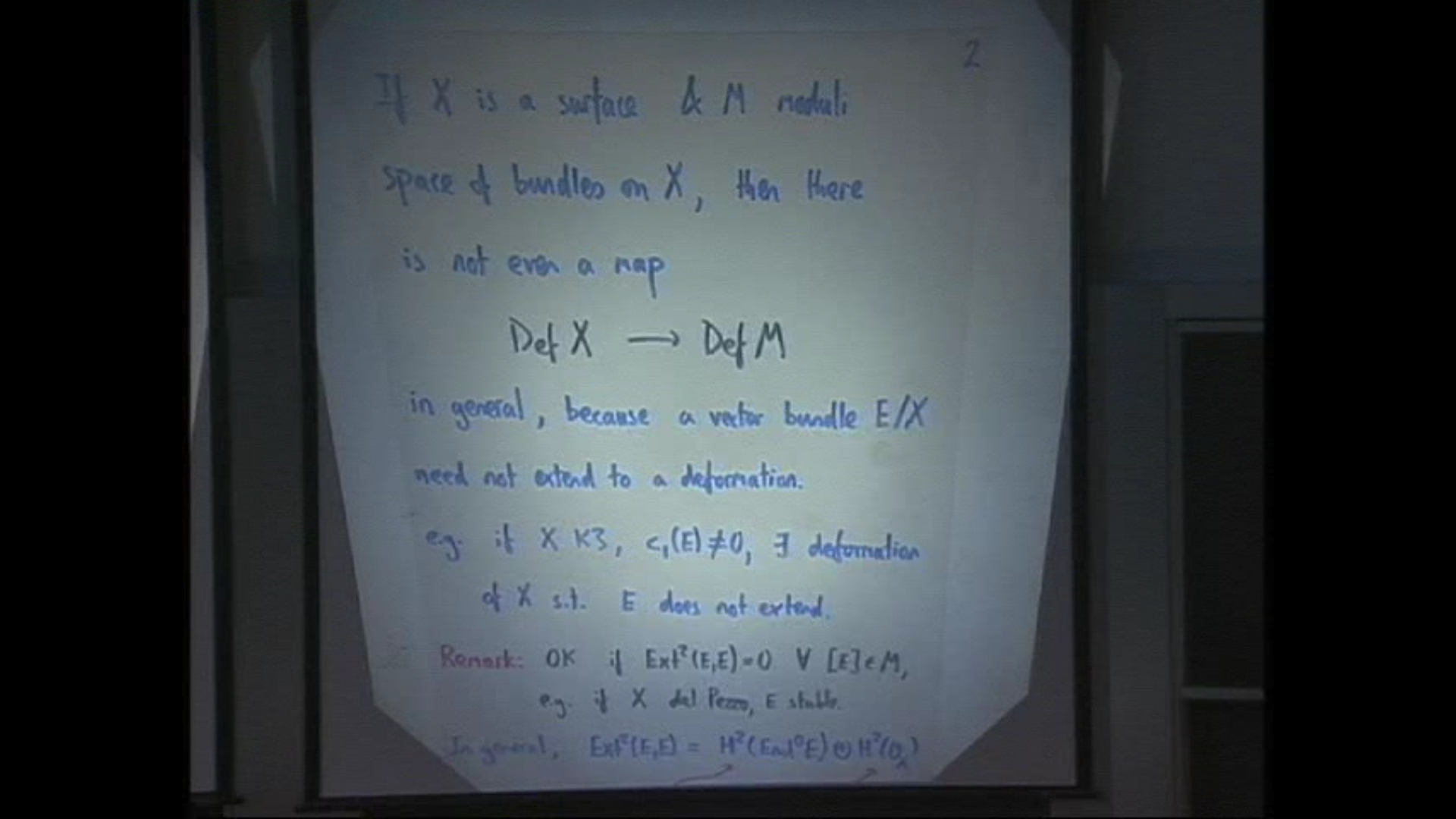Noncommutative Deformations of K3 Surfaces
Presenter
April 20, 2007
Keywords:
- minimal models
- algebraic geometry
- birational equivalence
- moduli spaces of curves
- moduli spaces of vector bundles
- noncommutative geometry
- stable vector bundles
- twisted sheaves
- noncommutative deformation theory
- Hochschild cohomology
- van den Bergh duality
- K3 surfaces
- noncommutative moduli space
- versal deformations
- Artinian local algebras
- Atiyah class
MSC:
- 14E30
- 14E08
- 14E05
- 14Exx
- 14-xx
- 14Fxx
- 14Nxx
- 14F05
- 14F10
- 13E10
- 14J28
- 13D03
- 13D10
- 13Dxx
- 13-xx
- 14A20
- 14Axx
- 14A22
Abstract
The workshop will concentrate on the recent advances on canonical and minimal models of algebraic varieties. We plan to study the proofs, survey applications and related results and chart future directions for research. Two algebraic varieties are said to be birational if their fields of rational functions are isomorphic. There is a unique smooth projective curve in each birational equivalence class of curves. For surfaces, the situation is a little more complex, but was completely understood in by the early 20th century: most surfaces have unique "minimal" models, and when this is not the case the set of minimal models is easy to understand. Shigefumi Mori won the Fields medal in 1990 for proving a similar theorem for 3-folds, and there has been intense work on extending the "Mori Programme" to higher dimensions, ever since. A closely related problem is the finite generation of the canonical ring of a variety of general type and thus the existence of "canonical" models for these varieties. Very recently Yum-Tong Siu on one hand and Birkar, Cascini, Hacon and McKernan on the other announced proofs of this finite generation. This has as a consequence the extension of the Mori Programme to all dimensions, and also has many other applications.
